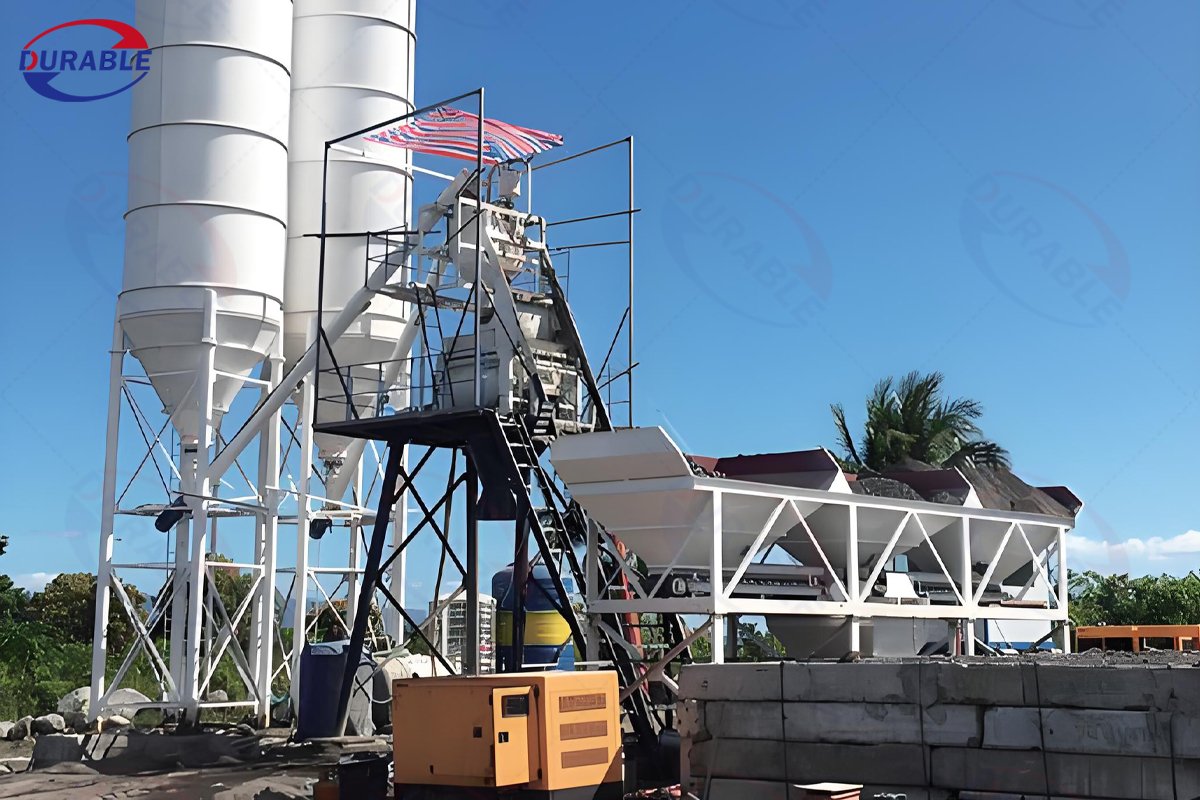Stationary Concrete Batching Plant
As a specialist in heavy machinery, I know the bedrock of major construction: concrete. A stationary concrete batching plant is key to success. This equipment creates ready-mixed concrete. It does this on a large scale. It is fixed on a strong foundation. This plant serves big, long-term projects. It also serves commercial concrete suppliers. It ensures a constant, high-quality supply of concrete. This plant is different from mobile mixers. It is a central hub for consistent, precise concrete production.
Table of Contents
- What Is the Core Value of a Stationary Concrete Batching Plant?
- In Which Fields Are Stationary Batching Plants Used?
- Keys to a stationary batching plant’s large-scale output and efficiency?
- How do stationary batching plants ensure high-volume efficiency?
- Beyond capacity, what else maximizes ROI?
- How Do You Operate and Maintain a Stationary Batching Plant Daily?
- Technical Parameters
- FAQs
What Is the Core Value of a Stationary Concrete Batching Plant?
A stationary concrete batching plant is a central system. It produces large amounts of concrete. Its core value lies in its ability to offer consistent, high-volume production. This machine mixes aggregates, cement, water, and additives precisely. It creates ready-mixed concrete that meets exact strength and performance needs.
Unlike smaller, mobile units, a stationary plant is built on a fixed site. It is designed for continuous operation. It serves large-scale, long-duration construction projects. It is also the main production facility for commercial concrete suppliers. It provides the high-quality concrete needed for major works.
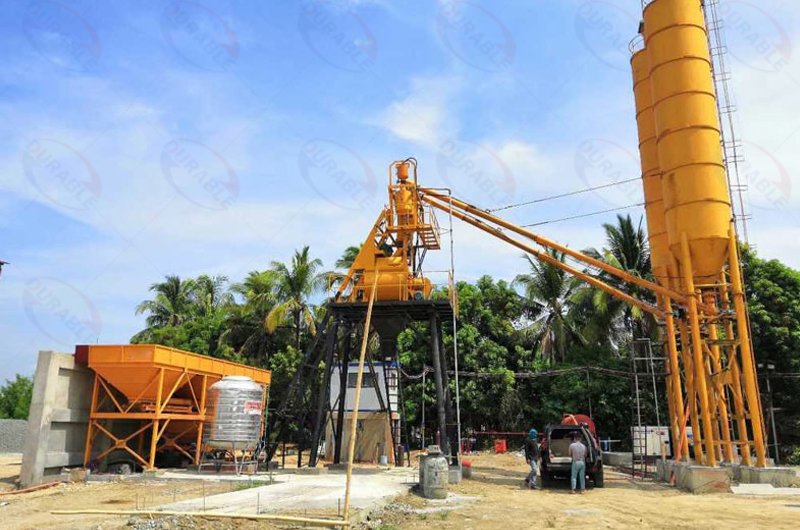
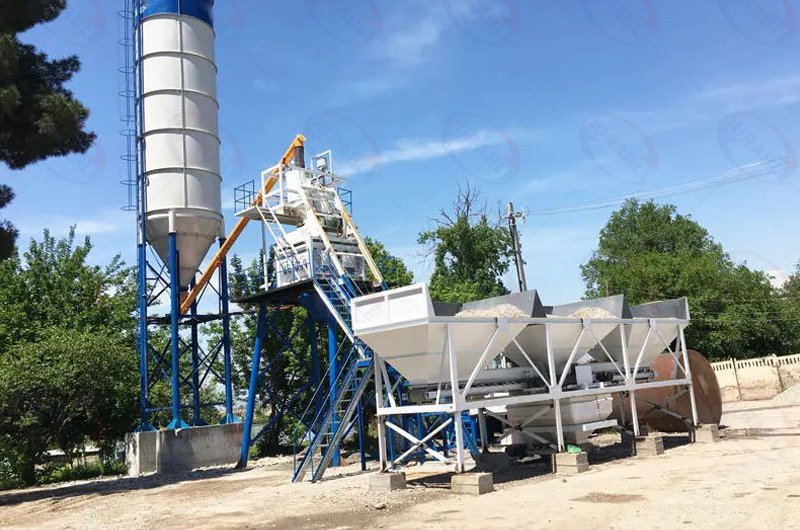
Why Fixed Plants Are Crucial for Large-Scale Concrete Production
Fixed plants are different from mobile mixers. Mobile mixers are flexible for small, changing sites. A stationary plant is built for stability and massive output. Its permanent setup means it can handle much larger volumes of raw materials. It can also produce concrete at a higher rate. This makes it ideal for large scale concrete batching plant needs.
The stability of a fixed plant allows for more precise weighing systems. It also allows for more robust mixing equipment. This leads to better concrete quality control. It reduces variations in the final product. For projects needing thousands of cubic meters of concrete, a stationary plant is essential. It provides consistent supply. It also ensures every batch meets strict specifications. This is vital for safety and project integrity.
| Feature | Stationary Plant Benefit | Your Practical Meaning |
|---|---|---|
| High Output | Produces large volumes continuously | Meets demand for big projects |
| Precision | Advanced weighing, consistent mixing | High-quality, uniform concrete |
| Reliability | Fixed setup, robust components | Less downtime, steady supply |
| Automation | Advanced control systems | Reduced labor, efficient operation |
| Cost Per Unit | Lower for large volumes over time | More economical for bulk concrete needs |
In Which Fields Are Stationary Batching Plants Used?
Stationary concrete batching plants are key assets for many B2B clients. They are essential where a large, steady supply of concrete is needed. These plants produce ready mix concrete production. They feed massive construction and infrastructure projects.
They also form the backbone of commercial concrete supply. This means they produce concrete for sale to various smaller projects. Their design helps them support long-term, high-volume demands. They deliver concrete consistently for critical applications.
Key Sectors Relying on Fixed Batching Plants
The primary users of stationary concrete batching plants are concrete producers and ready-mix concrete companies. These businesses run commercial operations. They supply concrete to a wide range of construction markets. This includes residential, commercial, and industrial building projects.
Large construction companies and contractors are also major users. They often set up their own plants on big project sites. This guarantees a timely, sufficient, and high-quality concrete supply. This applies to large infrastructure projects like highways, railways, bridges, tunnels, airports, and dams. It also applies to nuclear power plants, large industrial factories, and city complexes.
Even some mining companies benefit. For large construction inside a mine area, a plant is vital. This includes new processing plants, crusher foundations, or heavy-duty roads. Owning a plant lowers costs. It also improves efficiency for such specific needs. Precast concrete product manufacturers also use these plants. They produce concrete blocks, pipes, and other prefabricated components. They need a stable and high-quality concrete supply.
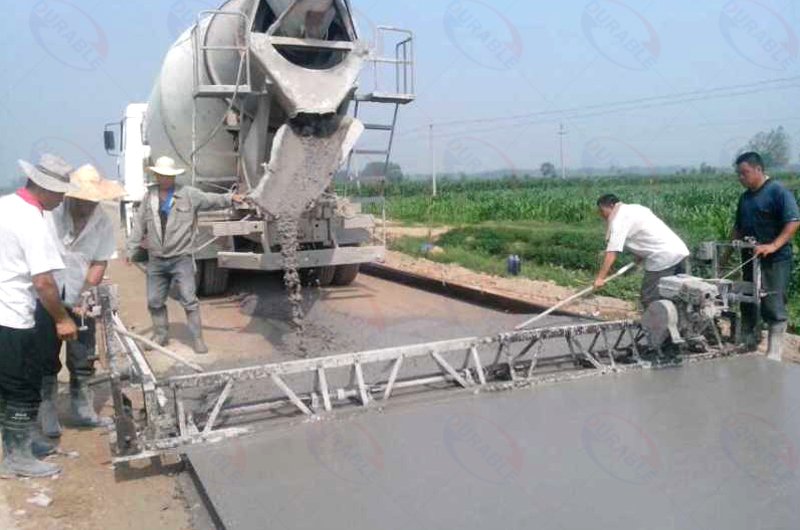
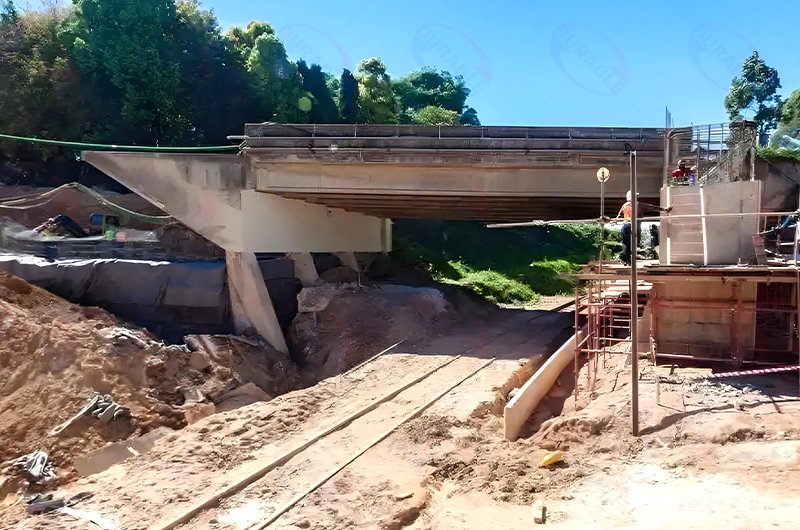
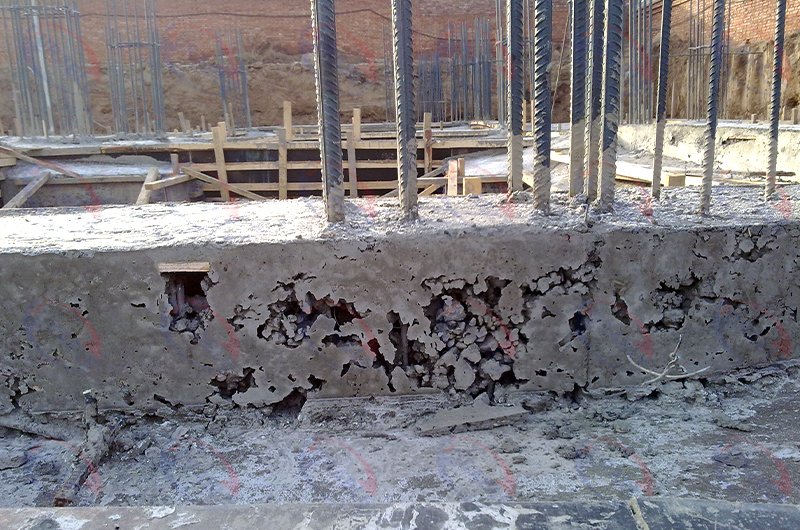
Keys to a stationary batching plant’s large-scale output and efficiency?
A stationary concrete batching plant achieves large-scale efficiency through its detailed design. It integrates many systems. Each system works together. This ensures a smooth flow of materials. It also ensures precise mixing. This allows for continuous, high-volume concrete output. It forms a complete concrete production line.
The plant’s stable, fixed structure supports heavy machinery. This includes large aggregate bins and powerful mixers. These components are critical for high output. They ensure that concrete is produced quickly and correctly. This allows for massive production capacity.
Key Systems for High Output Production
A typical stationary concrete batching plant has several main systems. They work together. Their operation is highly automated.
Aggregate Storage and Batching System: This system stores and weighs sand and stone. It has multiple bins. Each bin holds a different size of aggregate. Precise sensors in weighing hoppers or belt scales measure each type. Belt conveyors then move the weighed aggregates to the mixer. This ensures accurate material ratios for every batch.
- Powder Storage and Batching System: This system handles cement and other fine powders. It uses cement silos for storage. These silos often have devices to prevent material from sticking. Screw conveyors move the powder from the silos to special weighing hoppers. This ensures accurate measurement of all powdery materials.
- Water and Admixture Batching System: This system adds water and chemical additives. It includes water tanks and pumps. A water weighing hopper ensures precise water amounts. Admixture tanks and pumps store and measure various concrete additives. These additives change concrete properties like workability or setting time.
- Mixing System: This is the heart of the plant. It uses a concrete mixer. Most often, this is a twin-shaft mixer. It mixes materials very well. It is efficient and versatile. Sometimes, a planetary mixer is used. This is for concrete needing even higher uniformity. This includes concrete for precast components.
- Control System: This system runs the entire plant. It uses a PLC (Programmable Logic Controller). This system automates all processes. It manages production. It stores data. It diagnoses problems. It also prints reports. The interface is user-friendly. It allows for easy “one-button” operation. This reduces manual work.
- Auxiliary Systems: These systems support the main operations. The pneumatic system provides compressed air. This air powers valves and cylinders. The dust collection system captures dust. This improves air quality. There is also a control room for operators. A strong steel structure supports all parts. This ensures stable operation.
The process is simple: materials are weighed precisely. Then, they move into the mixer. The mixer blends them. After mixing, the concrete leaves the plant. It goes into concrete mixer trucks for transport. This seamless flow enables large-scale production.
How do stationary batching plants ensure high-volume efficiency?
An efficient stationary concrete batching plant uses advanced systems and new technologies. These elements work together. They ensure high output, precision, and environmental care. They are critical for concrete quality control. They also keep batching plant operating cost low.
These technologies focus on automation, accuracy, and sustainability. They help plants meet strict standards. They also ensure reliable performance for large projects. This makes them a smart investment for your business.
Advanced Metering and Mixing
Our stationary concrete batching plants use top-tier technology. We ensure maximum output and excellent quality.
- High Capacity and Stability: We offer many models. These range from 25m³/h to over 240m³/h. We match each system’s capacity. This ensures steady, efficient production. Our structures are very strong. We use high-strength steel. This comes from our experience with mining equipment. This ensures stability. It also handles tough conditions.
- Extreme Metering Accuracy: We use international brand sensors. We also use weighing meters. They have advanced auto-compensation. This ensures very precise weighing of all materials. This precision is key. It helps produce high-quality concrete.
- Efficient Mixing Host: Our plants use high-quality twin-shaft mixers. Their arms and blades use wear-resistant alloy materials. This ensures high mixing efficiency. Concrete uniformity is good. Mixing time is short. This increases output.
Smart Automation and Eco-Friendly Design
Our plants combine smart operation with environmental care.
Highly Intelligent Automation: We use advanced PLC control systems. They are powerful and easy to use. You can operate them with “one-button.” You can manage recipes. You can record production data. They diagnose faults. They allow remote monitoring and maintenance. This makes work easier. It also reduces labor.
- Visual Operation Interface: The display uses graphics. It shows real-time production status. It shows material use. It helps with management and tracing.
- Environmental Sustainability: We use efficient dust collection systems. These include bag or pulse dust collectors. They collect dust well. Emissions are low. This improves the work environment. Our design reduces noise. We use quiet motors. We optimize layout. This reduces noise pollution.
- Wastewater Recycling (Optional): You can add a concrete recycling machine. It separates sand and stone from wash water. This recycles aggregates. It also recycles water. This creates a truly eco-friendly batching plant.
Modular Design and Easy Maintenance
Our plants are designed for easy setup and upkeep.
- Modular Structure: All parts are modular. They are standardized. This makes transport, installation, and removal easy. Maintenance is also simple. This shortens project time.
- Easy Maintenance: We design for good access. There are inspection passages and ports. This makes replacing wear parts simple. Parts include mixer liners and blades.
| System Focus | Technology Highlight | Your Operational Advantage |
|---|---|---|
| Accuracy | High-precision weighing sensors | Consistent concrete quality, less waste |
| Mixing | Twin-shaft mixer, wear-resistant blades | Fast, uniform mixing, long life |
| Control | Advanced PLC, user-friendly interface | Easy operation, remote management, data insight |
| Environmental | Dust collectors, water recycling | Cleaner site, regulatory compliance, sustainability |
| Maintenance | Modular design, accessible components | Faster setup, reduced downtime, lower costs |
Beyond capacity, what else maximizes ROI?
When investing in a stationary concrete batching plant, capacity is important. But other factors are also key for maximizing your batching plant ROI. These include the total cost of ownership. They also include the plant’s operational efficiency. Its long-term reliability is vital.
Considering these factors helps you make a smart investment. It ensures the plant brings steady profits. It also reduces unforeseen costs. This leads to a strong investment return over the life of the plant.
Factors for Maximum ROI
Operational Efficiency: Beyond output rate, look at how efficiently the plant uses energy. Also, check how much labor it needs. Automated systems can greatly reduce labor costs. Energy-efficient motors and optimized mixing cycles save on electricity. These small savings add up to big gains over time.
- Material Waste Reduction: A plant with precise weighing and efficient mixing reduces waste. Less wasted material directly impacts your bottom line. Look for features that minimize concrete residue in the mixer. Also, consider systems that recycle wash water and aggregates. This saves both material and disposal costs.
- Durability and Maintenance Costs: A well-built plant lasts longer. It also needs less frequent repairs. Choose a plant with robust components. These include wear-resistant mixer parts and strong steel structures. These lower your long-term batching plant operating cost. Easy maintenance access also reduces labor time for upkeep. This means more uptime for production.
- After-Sales Service and Support: A plant’s reliability depends on good support. Choose a manufacturer with strong after-sales service. This includes readily available spare parts. It also includes quick technical support. Fast problem-solving minimizes costly downtime. This protects your production schedule and profits.
- Environmental Compliance: Modern regulations demand eco-friendly operations. Investing in a green eco-friendly batching plant ensures compliance. It avoids fines. It also improves your company’s image. Features like efficient dust collection and water recycling are crucial. They impact both the environment and your bottom line.
- Scalability: Consider if the plant can be upgraded later. Can you add more silos? Can you upgrade the mixer? This helps your investment grow with your business. It protects your initial capital outlay.
How Do You Operate and Maintain a Stationary Batching Plant Daily?
Proper operation and regular maintenance are vital for your stationary concrete batching plant. They ensure the plant runs smoothly. They also extend its working life. This prevents costly breakdowns. It also keeps your concrete production line on schedule.
Daily checks and routine servicing are crucial. They protect your investment. They also ensure the plant operates safely and efficiently. Following manufacturer guidelines for upkeep is always the best practice.
Ensuring Long-Term Performance and Reliability
To ensure your stationary concrete batching plant performs well, focus on several key areas:
- Daily Pre-Operation Checks: Before starting, check all material levels. Look at aggregate bins, cement silos, and water tanks. Inspect all conveyors for blockages. Check the mixer drum for any hardened concrete. Ensure all emergency stop buttons work. Verify the control panel is responsive.
- Regular Cleaning: Clean the mixer drum thoroughly after each shift. Concrete can harden and cause big problems. Flush all discharge chutes and hoppers with water. Clean the dust collectors. This prevents buildup and maintains air quality.
- Lubrication: Follow the lubrication schedule strictly. Grease all moving parts. This includes bearings, conveyor rollers, and mixer shafts. Proper lubrication reduces wear and tear. It also prevents friction.
- Component Inspection: Regularly inspect wear parts. Check mixer blades, liners, and conveyor belts for damage. Look at all pipes and hoses for leaks. Examine electrical cables for fraying. Replace worn parts promptly to prevent larger issues.
- System Monitoring: Pay attention to the batching plant control system display. Look for any error codes or unusual readings. Monitor motor temperatures. Listen for abnormal noises. Address any issues quickly.
- Calibration: Recalibrate all weighing sensors periodically. This ensures materials are measured accurately. This is key for consistent concrete quality control. It also prevents material waste.
- Safety Protocols: Always follow safety procedures. Ensure all guards are in place. Train operators on safe practices. Provide proper personal protective equipment.
Technical Parameters
| Model (Bucket type) | HZS25 | HZS35 | HZS50 | HZS75 |
| Productivity | 25m³/h | 35m³/h | 50m³/h | 75m³/h |
| Concrete mixer | JS 500 | JS 750 | JS 1000 | JS 1500 |
| Mixer discharging capacity | 0.5m³ | 0.75m³ | 1m³ | 1.5m³ |
| Feeding Mode | Lift Hopper | |||
| Aggregate batching machine | PLD800 | PLD1200 | PLD1600 | PLD2400 |
| Kinds of aggregte | 2/3/4 | 2/3/4 | 3/4 | 3/4 |
| Max aggregate size | 60mm | 80mm | 80mm | 80mm |
| Discharging height | 3.8 m | 3.8 m | 4.1 m | 4.1 m |
| Aggregate weighing accuracy | ±2% | ±2% | ±2% | ±2% |
| Cement weighting accuracy | ±1% | ±1% | ±1% | ±1% |
| Flyash weighing accuracy | ±1% | ±1% | ±1% | ±1% |
| Water weighing accuracy | ±1% | ±1% | ±1% | ±1% |
| Additive weighing accuracy | ±1% | ±1% | ±1% | ±1% |
| Weight | 10t | 13.5t | 18.5t | 25t |
| General installed power | 65kw | 75kw | 100kw | 110kw |
| Control system | Semi-automatic/full automatic control | |||

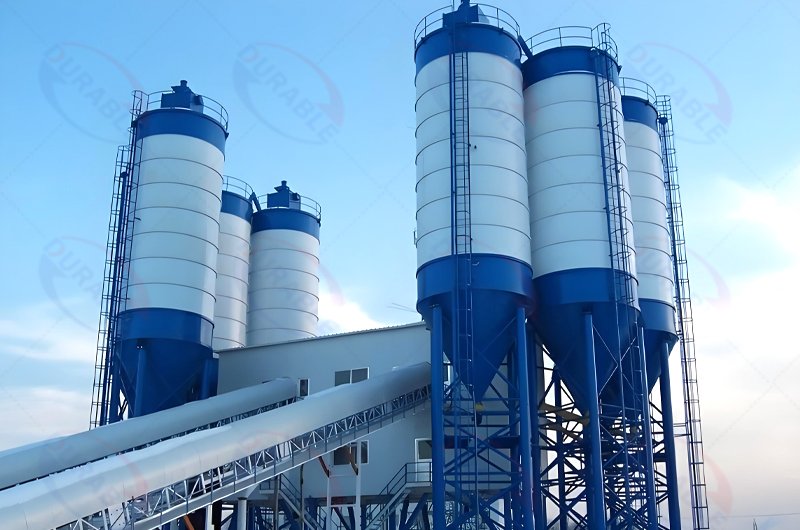
| Model (Belt type) | HZS60 | HZS90 | HZS120 | HZS180 | HZS240 |
| Productivity | 60m³/h | 90m³/h | 120m³/h | 180m³/h | 240m³/h |
| Concrete mixer | JS 1000 | JS 1500 | JS 2000 | JS 3000 | JS4000 |
| Mixer discharging capacity | 1m³ | 1.5m³ | 2m³ | 3m³ | 4m³ |
| Feeding Mode | Belt Conveyor | ||||
| Aggregate batching machine | PLD1600 | PLD2400 | PLD3200 | PLD4800 | PLD6400 |
| Kinds of aggregte | 3/4/5 | 3/4/5 | 3/4/5 | 3/4/5 | 3/4/5 |
| Max aggregate size | 80mm | 80mm | 80mm | 80mm | 80mm |
| Discharging height | 4.1 m | 4.1 m | 4.1 m | 4.1 m | 4.1 m |
| Aggregate weighing accuracy | ±2% | ±2% | ±2% | ±2% | ±2% |
| Cement weighting accuracy | ±1% | ±1% | ±1% | ±1% | ±1% |
| Flyash weighing accuracy | ±1% | ±1% | ±1% | ±1% | ±1% |
| Water weighing accuracy | ±1% | ±1% | ±1% | ±1% | ±1% |
| Additive weighing accuracy | ±1% | ±1% | ±1% | ±1% | ±1% |
| Weight | 28t | 40t | 65t | 88t | 98t |
| General installed power | 110kw | 156kw | 200kw | 260kw | 300KW |
| Control system | Full automatic control | ||||
FAQs
Q 1: What is the typical batching plant capacity for a large construction project?
A: For a large construction project, batching plant capacity often ranges from 120m³/h to 240m³/h. Some very large projects may need even higher capacities. The exact size depends on the project’s daily concrete demand.
Q 2: How does a dry wet separation batching plant benefit operations?
A: A dry wet separation batching plant integrates a concrete recycling system. This system separates aggregates from wash water and leftover concrete. It allows for the reuse of sand, stone, and water. This reduces waste. It also makes the plant more eco-friendly.
Q 3: What are the main benefits of a modern batching plant control system?
A: A modern batching plant control system offers full automation. It ensures precise material weighing. It tracks production data. It can also diagnose faults remotely. This makes the plant easier to operate. It also ensures consistent concrete quality control.
Q 4: What kind of concrete mixer is best for a stationary plant?
A: For a stationary plant, a forced twin-shaft concrete mixer is generally best. It is highly efficient. It mixes materials very uniformly. This is crucial for producing high-quality concrete. Planetary mixers are also used for very high uniformity needs.
Q 5: How does a stationary concrete batching plant contribute to large infrastructure projects?
A: A stationary concrete batching plant provides large volumes of high-quality concrete consistently. This is essential for large infrastructure projects. It ensures timely concrete supply. It also helps meet strict construction schedules and quality standards for massive structures like dams or bridges.
 Durable Machinery
Durable Machinery
